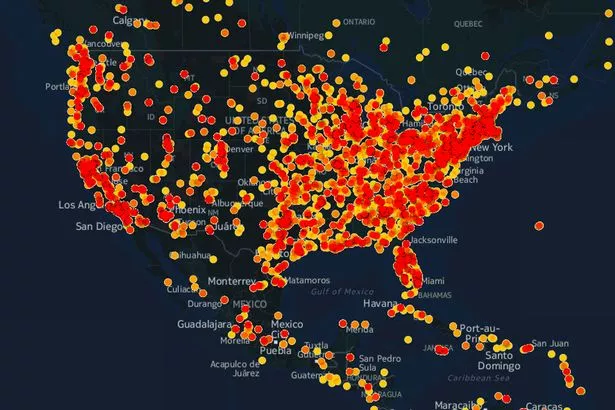The Impact Of TikTok On Trade: Circumventing Trump Tariffs

Table of Contents
The Trump administration's tariffs imposed significant challenges on global trade, disrupting established supply chains and increasing costs for businesses. However, in the midst of this upheaval, unexpected avenues for navigating these restrictions emerged. This article explores how TikTok, the wildly popular short-form video platform, inadvertently played a role in facilitating trade despite these tariffs, demonstrating its unique characteristics and impact on both small businesses and larger corporations. We will delve into the strategies employed, the legal ambiguities involved, and the potential future implications for e-commerce and international trade, examining the intersection of TikTok and trade.
TikTok's Role as an Unconventional E-commerce Platform
The impact of TikTok on trade wasn't initially anticipated, but its viral nature and direct consumer reach proved surprisingly effective in mitigating tariff impacts. The platform transformed into an unconventional but powerful e-commerce tool.
Direct-to-Consumer (DTC) Sales on TikTok
Businesses cleverly leveraged TikTok to connect directly with consumers, bypassing traditional wholesale and retail channels that were heavily affected by the tariffs. This direct-to-consumer (DTC) approach minimized reliance on intermediaries whose costs were inflated by tariffs.
- Lower marketing costs: Organic reach on TikTok is significantly higher than many other platforms, allowing businesses to reach large audiences with minimal advertising expenditure. This is especially relevant for smaller businesses with limited marketing budgets.
- Increased brand loyalty: Direct engagement with consumers fostered stronger relationships and increased brand loyalty, resulting in repeat business and a more resilient customer base.
- Direct customer feedback: TikTok's interactive nature allowed businesses to receive immediate feedback on their products, enabling rapid adjustments to meet consumer demand and preferences.
Examples include businesses using TikTok Shop (where available) and partnering with influencers to directly sell products to their followers. This streamlined approach proved exceptionally effective in sidestepping tariff-related price increases.
Facilitating Cross-Border Transactions
TikTok also enabled businesses to reach international customers directly, potentially bypassing tariff-related supply chain disruptions. This opened new markets for businesses previously hindered by complex import/export processes and increased costs.
- Increased reach: Accessing global audiences became simpler, allowing businesses to expand their market reach significantly, especially into regions where tariffs imposed significant barriers to entry through traditional channels.
- Access to new markets: Businesses successfully utilized TikTok to penetrate new international markets that were previously inaccessible or economically unviable due to the tariffs.
- Overcoming logistical hurdles: While still challenging, using TikTok allowed businesses to explore innovative logistical solutions for international shipping, adapting to the changing trade environment.
However, challenges remained, including navigating international payment processing systems and adhering to diverse international shipping regulations.
The Legal Landscape and Gray Areas
The use of TikTok to mitigate the impact of tariffs presents a complex legal landscape, with potential ambiguities. It's crucial to distinguish between legitimate trade adaptation and outright tariff evasion.
Tariff Evasion vs. Strategic Trade Adaptation
Intentional tariff evasion, designed to avoid paying legally mandated duties, is illegal. However, adapting trade strategies to leverage platforms like TikTok to minimize the negative effects of tariffs presents a grey area.
- Legal interpretations: The application of existing trade laws to this novel approach is ambiguous, leading to uncertainty for businesses.
- Ambiguities in trade regulations: Current trade regulations may not explicitly address the use of social media platforms like TikTok for international trade, leaving room for varied interpretations.
- Potential for future legislation: The use of TikTok and similar platforms for trade is likely to prompt future legislative efforts to clarify the legal framework and address potential loopholes.
Compliance and Regulatory Uncertainty
Businesses navigating international trade face significant challenges in complying with complex regulations, especially when using emerging platforms like TikTok for sales and marketing.
- Customs declarations: Accurate and comprehensive customs declarations are crucial to avoid penalties, but the nature of TikTok transactions may present unique challenges in documenting transactions properly.
- Import/export regulations: Adherence to varying import and export regulations across different countries remains critical for compliance and avoiding legal repercussions.
- Potential risks of non-compliance: Non-compliance can lead to significant fines, legal action, and reputational damage, underscoring the need for careful navigation of the legal landscape.
Case Studies: Businesses Leveraging TikTok for Trade
Several businesses successfully used TikTok to navigate the challenges of the Trump-era tariffs, showcasing the platform's potential. While specific examples require careful consideration of confidentiality and legal implications, numerous anecdotes highlight the platform's adaptability. For example, several small clothing brands experienced significant growth by showcasing their products through influencer marketing and live-stream shopping events. This allowed them to connect directly with consumers, circumventing traditional retail channels affected by increased import costs. Similarly, businesses selling handmade crafts saw increased international sales by partnering with international influencers.
Conclusion
TikTok's unexpected role in international trade underscores the adaptability of businesses facing trade restrictions. While not initially designed for this purpose, it facilitated new strategies for direct-to-consumer sales and cross-border transactions, showcasing the innovative solutions businesses deploy in challenging economic environments. The legal ambiguities surrounding this phenomenon highlight the need for clearer and more adaptable international trade regulations in the digital age. However, various case studies demonstrate the transformative potential of platforms like TikTok in reshaping global commerce.
Understanding the interplay of TikTok and trade requires careful analysis of both the opportunities and the risks involved. Learn more about navigating the complexities of TikTok and trade and optimize your business strategy in this dynamic global marketplace. Explore innovative solutions to overcome similar trade barriers and embrace the potential of social media for international commerce.

Featured Posts
-
 T Mobiles 16 Million Data Breach Fine Three Years Of Security Failures
Apr 22, 2025
T Mobiles 16 Million Data Breach Fine Three Years Of Security Failures
Apr 22, 2025 -
 Middle Managers The Bridge Between Leadership And Workforce
Apr 22, 2025
Middle Managers The Bridge Between Leadership And Workforce
Apr 22, 2025 -
 The Undervalued Asset How Middle Managers Benefit Companies And Employees
Apr 22, 2025
The Undervalued Asset How Middle Managers Benefit Companies And Employees
Apr 22, 2025 -
 Blue Origin Scraps Rocket Launch Due To Subsystem Issue
Apr 22, 2025
Blue Origin Scraps Rocket Launch Due To Subsystem Issue
Apr 22, 2025 -
 New Business Hotspots Across The Country An Interactive Map
Apr 22, 2025
New Business Hotspots Across The Country An Interactive Map
Apr 22, 2025
